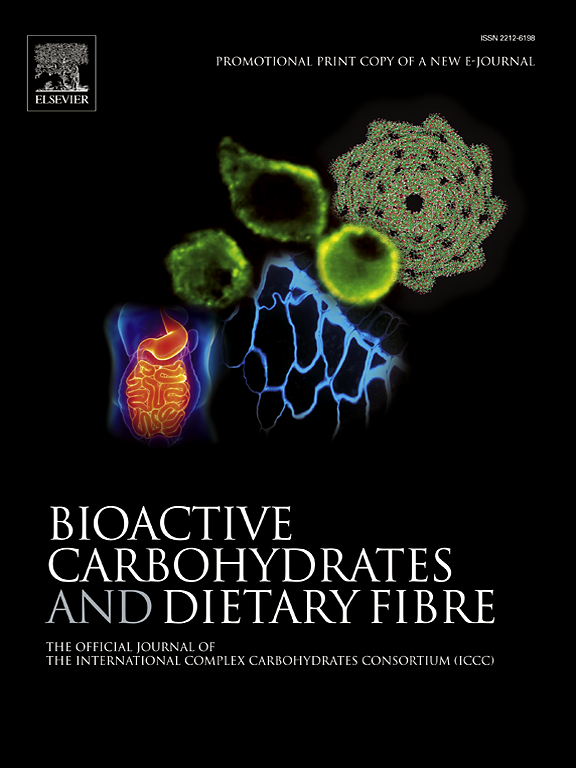不同芦笋品种菊粉型果聚糖的提取、纯化及结构表征
IF 3.6
引用次数: 0
摘要
菊粉是一种天然存在的果糖多糖和可溶性膳食纤维,存在于各种植物中,因其优异的益生元特性和作为脂肪或糖的替代品而常用于食品工业。商业菊粉主要是从菊苣植物中提取的,菊苣只生长在世界温带地区。本研究从化学和结构上考察了四种芦笋(falcatus、racemosus、officinalis和gonocladus)作为食品工业中替代菊粉来源的潜力。采用热水提取法和微波辅助提取法提取菊粉。对芦笋菊粉进行菊粉含量、总酚类物质、总黄酮、自由基清除活性和矿物成分分析。falcatus、gonocladus和racemosus鲜根的菊粉含量较高(分别为23.61±1.04、17.08±2.58、12.22±1.51%)。微波辅助提取的淋球菌菊粉中菊粉的含量最高(92.31±2.0.89%)。用FTIR和XRD对芦笋根中菊粉的分子结构和物相行为进行了表征,并用DSC对其热行为进行了表征。结果表明,芦笋菊粉作为一种替代菊粉来源在食品中具有很大的应用潜力。本文章由计算机程序翻译,如有差异,请以英文原文为准。

Extraction, purification and structural characterization of inulin-type fructans from different selected Asparagus species
Inulin is a naturally occurring fructose polysaccharide and soluble dietary fiber, found in various plants, commonly used in the food industry for its excellent prebiotic properties and as a fat or sugar substitute. Commercial inulin is largely extracted from Chicory plant, which is grown only in temperate parts of the world. This study chemically and structurally investigated the potential of four Asparagus species A. falcatus, A. racemosus, A. officinalis, and A. gonocladus as alternative inulin sources for the food industry. Inulins were extracted using either hot water extraction or microwave-assisted extraction. Asparagus inulin powders were analyzed for inulin content, total phenolics, total flavonoids, radical scavenging activity and mineral composition. A. falcatus, A. gonocladus and A. racemosus fresh roots contained considerably high inulin contents (23.61 ± 1.04, 17.08 ± 2.58, 12.22 ± 1.51 % FW, respectively). The highest inulin content in their powders (92.31 ± 2 0.89 %) was shown by microwave-assisted extracted A. gonocladus inulin powder. The molecular structure and phase behavior of inulin contained in roots of Asparagus were confirmed by FTIR and XRD respectively, and the thermal behavior was confirmed by DSC data. The results suggest that Asparagus inulin possesses significant potential for use in food applications as an alternative inulin source.
求助全文
通过发布文献求助,成功后即可免费获取论文全文。
去求助
来源期刊

Bioactive Carbohydrates and Dietary Fibre
Agricultural and Biological Sciences-Food Science
CiteScore
6.00
自引率
0.00%
发文量
38
期刊介绍:
 求助内容:
求助内容: 应助结果提醒方式:
应助结果提醒方式:


